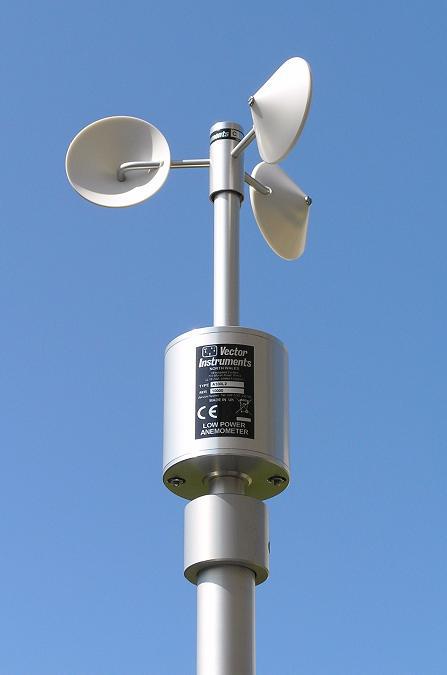Picking the Right Anemometer: A Comprehensive Buying Overview
Picking the Right Anemometer: A Comprehensive Buying Overview
Blog Article
All You Need to Find Out About Anemometers: Just How They Work, Why They Matter, and Where to Make use of Them
Anemometers, however frequently neglected in the world of scientific tools, play a vital function in various areas, providing valuable understandings into wind rate and airflow patterns. Understanding the technicians behind these gadgets is important for any person looking for to harness the power of this information. From meteorologists tracking weather patterns to designers designing structures with wind tons in mind, the applications of anemometers are significant and diverse. As we look into the ins and outs of anemometer technology, we will certainly uncover the inner functions of these tools, their relevance, and the vital considerations when choosing the appropriate anemometer for certain applications.

Anemometer Essentials
A vital instrument utilized to measure wind speed and instructions, the anemometer plays an essential duty in weather forecasting and various markets. An anemometer commonly is composed of three or four cups that turn in the wind, a vane that aims into the wind, and sensors to track the movements or rotations.
There are different sorts of anemometers readily available, consisting of mug anemometers, vane anemometers, hot-wire anemometers, and sonic anemometers, each with its special features and applications. Mug anemometers are typically made use of for fundamental wind speed measurements, while vane anemometers are favored for directional dimensions. Hot-wire anemometers appropriate for reduced airspeeds, and sonic anemometers are excellent for high-precision dimensions in research study and commercial settings. Comprehending the basics of anemometers is essential for precise wind information collection and evaluation across various industries.
Principles of Anemometer Operation
Structure on the foundational understanding of anemometer basics, the principles of anemometer procedure elucidate the mechanics behind wind speed and direction dimensions. Anemometers operate the principle of airflow affecting a sensing unit, causing it to rotate. Mug anemometers, as an example, have 3 or more cups that record the wind, triggering them to spin much faster as the wind rate increases. The rotation speed is then exchanged a wind rate dimension. Vane anemometers, on the various other hand, make use of a tail or a probe that aligns itself with the wind direction, offering a measurement of wind instructions based on the alignment of the sensing unit. Hot-wire anemometers rely upon a warmed wire that cools down as wind overlooks it, with the price of cooling establishing the wind rate. Ultrasonic anemometers action wind rate and instructions by assessing the moment visit homepage it takes for ultrasonic signals to travel between transducers. Recognizing these principles is critical for exact and reliable like this wind dimensions in numerous applications.
Importance of Anemometers
Anemometers play a critical duty in determining wind rate and instructions, providing important information for weather forecasting, climate researches, ecological monitoring, and aeronautics operations. Meteorologists rely on anemometers to collect precise wind information, helping them comprehend weather condition patterns, predict storms, and issue prompt warnings to the public. Wind farm operators use anemometers to evaluate wind problems and optimize power manufacturing from wind generators.
Applications Across Different Industries
In the eco-friendly energy field, anemometers play an important function in analyzing wind problems for wind farm placements, guaranteeing ideal energy production. Industries like building and mining use anemometers to keep an eye on wind rates, essential for safety and security methods, specifically when functioning at elevations or in open-pit mines where solid winds can pose threats. In agriculture, anemometers help farmers in taking care of plant splashing by supplying real-time information on wind speed to stay clear of drift.

Picking the Right Anemometer for Your Needs
For basic purposes, a my response mug anemometer is ideal for gauging wind rate, while a vane anemometer supplies wind instructions data. Hot-wire anemometers are suitable for reduced airspeed dimensions, and ultrasonic anemometers offer high accuracy and resilience.

Verdict
Finally, anemometers play a crucial function in gauging wind speed and direction across various sectors. Recognizing the principles of anemometer operation is important for choosing the appropriate gadget for details needs. From weather forecasting to air travel, anemometers are important tools for making certain and gathering precise data safety and security in different applications. When selecting the most suitable gadget for gauging wind conditions., it is important to think about the significance of anemometers in order to make enlightened choices.
There are numerous kinds of anemometers available, including mug anemometers, vane anemometers, hot-wire anemometers, and sonic anemometers, each with its special functions and applications. Cup anemometers are typically utilized for fundamental wind speed measurements, while vane anemometers are favored for directional dimensions. Hot-wire anemometers are suitable for low airspeeds, and sonic anemometers are ideal for high-precision measurements in research study and industrial setups.Building on the fundamental understanding of anemometer essentials, the concepts of anemometer operation clarify the auto mechanics behind wind speed and direction dimensions. For basic functions, a cup anemometer is ideal for measuring wind rate, while a vane anemometer provides wind instructions data.
Report this page